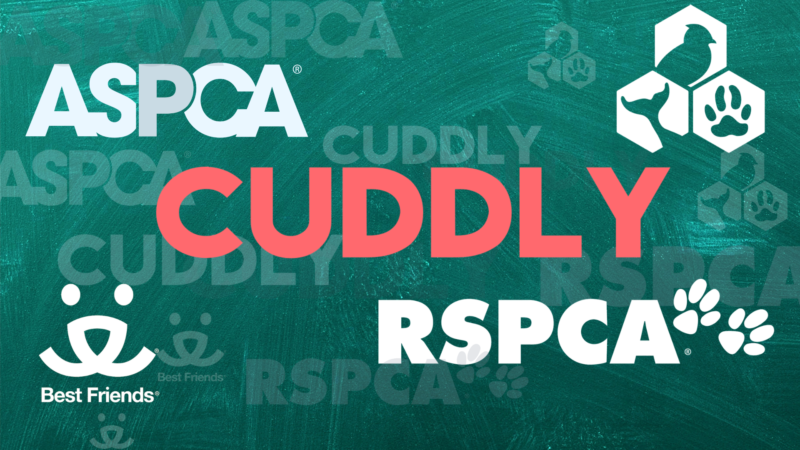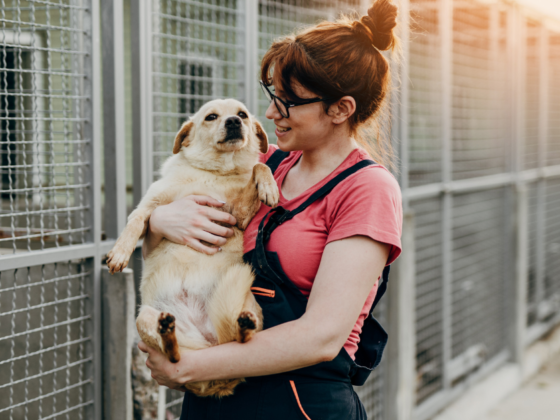Animal lovers tend to be generous people. As evident, Cuddly has more than 250,000 supporters who have contributed more than $47 million to animal related charities.
When giving away your hard-earned cash, you probably want to know your money is being spent wisely and supports the charity’s mission.
How can you separate the best animal charities from the rest? We’ll tackle that and more in this piece.
| Consider with CUDDLY: How to evaluate the best animal charities What makes a good charity? How to choose the right one, and how to avoid scammers. |
What Makes A Good Charity?
Good charities have a well-defined mission and freely share how that mission is accomplished.
Here at Cuddly we check every organization that wants to use our services through Guidestar.org. Anyone can sign up for a free account on Guidestar. You can find financial data on 1.8 million tax-exempt non-profits in a searchable database.
There is also Charity Navigator which allows donors to review organizations.
Good charities use donations efficiently. Compare organizations to those with similar missions to determine cost-effectiveness.
How To Choose A High-Impact Cause To Support
What is near and dear to your heart? There are rescues that focus on specific breeds and those that take in all kinds of critters. Search online for the type of rescue you want to support. Ask your like-minded friends who they support.
With many charities competing for your donations, look for those that will give you the most satisfaction.
How To Evaluate A Charity
While you may be instantly drawn to a particular charity, it’s still important to do your research and due diligence beforehand. This ensures that you understand how they run and the background work that must be done on a daily basis.
Evaluate Charities’ Effectiveness
As an animal-lover, you probably want your donation to directly help animals. By studying the charity’s financial documents, you can see where their money comes from and where it goes.
Only a small fraction of the charity’s budget should be going to administrative or fundraising costs. Do the expenditures align with the organization’s mission? If it’s a rescue, animal care should be a major expense.
Look to see if their income is usually greater than their expenses. Being a non-profit does not mean they should operate in the red. Repeatedly operating at a deficit is not sustainable. Many well-intended people get into animal rescue because they love animals but don’t realize how much work there is to keep a non-profit financially viable. When they end up with too many animals and too little money, the animals end up suffering.
On the other hand, if an organization could have too much money sitting in the bank, because they are not spending it to fulfill their mission. It is generally acceptable to have two years of operating expenses in the bank, so the organization is sustainable even if donations decrease during an economic downturn. If they are trying to save up for a special project, such as building a new kennel, then that money should be accounted for separately, not as part of the general operating budget.
Evaluate Charities’ Transparency
All tax-exempt organizations must provide a copy of their tax returns (form 990) when asked. If they refuse to give it to you, that’s a red flag. If an organization takes in more than $50,000 a year you can usually find their 990 at Guidestar.org. If they take in less than $50,000 a year, they are only required to submit a postcard return they should still be able to provide you with their financial information.
Organizations do not have to be tax-exempt to ask for donations but if you donate, you cannot deduct the donation from your taxes. If the organization has filed for non-profit status, they can start taking donations and when their non-profit status is approved then your donation becomes tax-deductible.
Being tax-exempt means the organization has worked to get approved and the status provides evidence that the charity is legitimate.
Tax-exempt groups must abide by strict reporting guidelines when it comes to their finances. If a group does not file their financial reports with the IRS annually, they can lose their non-profit status. Failing to keep up on paperwork is a sign of poor management. The organization may not be managing the rest of their operation well either.
Avoid Scammers
Sadly, there are people who will try to take advantage of your generous heart.
If you cannot find a purported organization on Guidestar or the IRS website, they may not be legitimate. However, it’s important to note that they may not show up if they only just applied.)
Be suspicious if:
- They won’t give you an address where the animals are kept or where their headquarters are.
- If they don’t take checks and don’t have a bank account in the organization’s name but ask for Venmo or Paypal to go to a personal account.
For example, a “rescue” set up a social media page and posted several purebred, rare-breed animals for adoption. The adoption fees were many times higher than most rescue organizations charge. There was no address on the Facebook page nor their website. The organization was not registered with the IRS or any state as a non-profit.
When potential adopters asked where the animals were, they were told to send the adoption fee first, then they would be told where the animal was. The photos of the animals were obviously taken at different locations. Then when potential adopters sent the money, they were asked to send more money and were still not told where nor when they could see the animal in question.
Other rescues have used photos that were copied from other pages. For example, a woman posted in a group, before and after photos of a horse she had rescued and nursed back to health. A few days later her photos were being used on a rescue site to solicit donations. The rescue claimed that they had rehabilitated the horse and that he would be available for adoption soon.
This has also happened with other animals too. Imagine surfing the web for rescues and seeing the photo of your own dog with a totally false story begging people for donations.
Evaluate Charity Adoption Rate
Animal shelters must keep detailed records on how many animals come in, how many were claimed by owners, how many died or were euthanized, and how many were adopted out. These records can usually be obtained for state or county government or at Shelter Animals Count.
If more animals come in than are adopted out, the shelter may make room by euthanizing animals. If a no-kill shelter operator can’t say “no,” then overcrowding could occur and the quality of care the animals receive may go down.
Evaluate Charity Staff And Space Capacity
An organization’s leadership will be listed on the financial reports and should also be on their website.
Tax-exempt organizations should have a board of directors, made up of unrelated people. Board members may be volunteers, but the director might be paid. Salaries of paid staff should be listed.The board should be evaluated each year to ensure that each member is actively participating and completing any tasks assigned to them. Meetings should be held regularly.
A one-man show is often not sustainable in the long term and should be a red flag. As mentioned previously, many well-intentioned people get into rescue and then find themselves in over their head.
Shelters have limited capacity. Some organizations take in animals that are not likely to be adopted and instead provide permanent sanctuary to them until the end of their days. Sanctuaries must be careful not to take in more animals than they can care for. The director or board may have to say “no” to people wanting to surrender animals. Every effort should be made to find alternative solutions for those animals.
Not all rescues have physical shelters but rely on volunteers to take care of pets in their own homes until they can be adopted. Even with no physical location it should not be difficult to communicate with them.
Board members and staff should be willing to share information with the public. Social media makes it easy for charities to share information about what they are doing with the donations received.
You Can Donate To More Than One Place
If you can’t decide which cause to throw all your support behind, you can support several different groups. Since every donation, no matter how small, can make a difference you can do a lot of good by spreading your donations out.
More than 3,500 rescues and shelters work with Cuddly to help support their work. To find a rescue near you, go to our Shelter Search or see our Wishlist for animals in need.
Every Donation Makes A Difference
Millions of animals end up in shelters and rescues each year. Every donation makes a difference in their lives. However, not all charities are the same. To make sure your donation goes toward helping the most animals, you need to do your research.
There are online sources to find financial information on tax-exempt organizations to help you make wise decisions when giving away your hard-earned cash.
For additional resources, check out our blog What Makes a Good Animal Shelter? or 9 Best Pet Adoption Websites.













